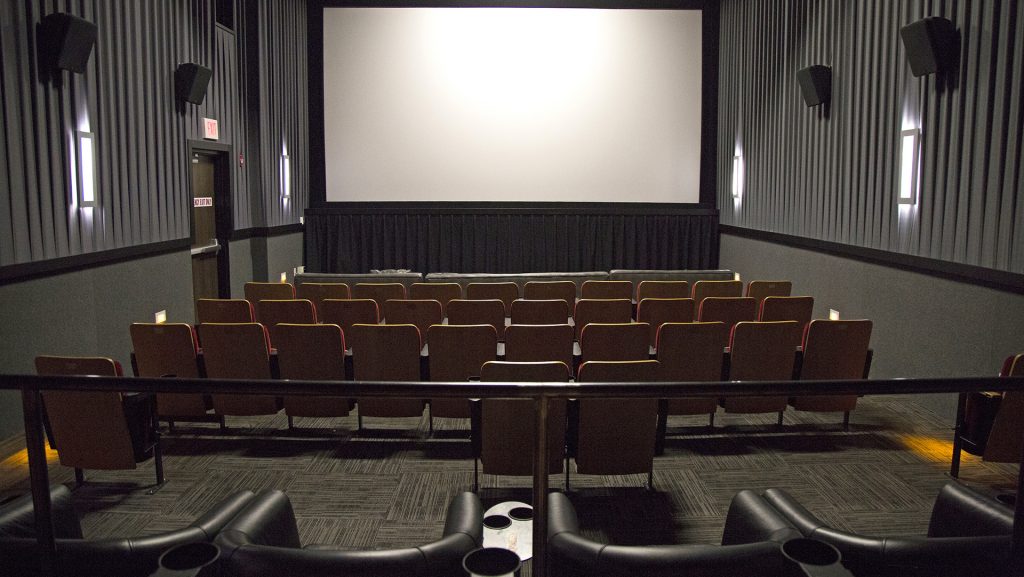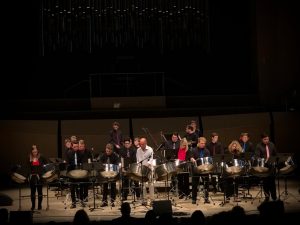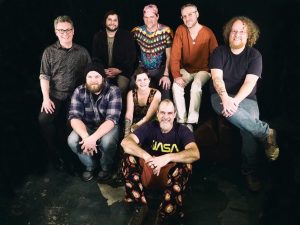The music behind iconic films, discussed
Iowa City film experts discussed the importance of music and current musical trends in cinema at “Scoring the Screen: The Power of Music in Film.”
April 17, 2019
“You mean a institution? A mad house?” hotel owner Norman Bates says as he leans forward to his future victim. The tension thickens, suddenly strings starts humming, growing louder,and higher pitch as the pressure grows. Soon Bates calms and so does the strings, “We all go a little mad sometimes.”
This iconic scene from Hitchcock’s famous 1960s thriller Psycho is played for a crowd at the Iowa City Public Library at the Obermanm’s Center event “Scoring the Screen: The Power of Music in Film,” which gave people the opportunity to learn about a certain aspect of film, the music.
Iconic scores such as the terrifying building bass from Jaws or the tremendous fanfare from Star Wars help create not just the score for scenes, they also add depth and soul to movies. Music in film is a way for the audience to feel emotions and atmosphere, and it also tells a story in and of itself.
The event brought local professors and a local filmmaker to speak about the importance music has in films and current trends that have emerged from the art.
“[Movie scoring] is like a candle underneath the image,” said Nathan Platte, a UI music associate professor. “Which sort of warms the image, that has this sort of effect on how we perceive the characters and the story.”
The way music adds depth to film is something that everyone has encountered, but it may be unnoticed to the common viewer. Music is often used for the use for character introduction.
“The use of the song to introduce a character in a film is a very common thing to do,” said Corey Creekmur, a UI cinema associate professor. “This is a case where the song is familiar to you, whether you’ve seen the film or not. So you’re asked to make these curious associations between this character and the song.”
These songs are used with the intent that they are familiar to the audience and can be used to show contrast with a character or scene or help draw certain links to the music and story. With current trends in cinema, though, music is being used in a much more story structure way.
“It’s clear with these recent examples that they know what song they got, and they have planned the scene carefully around it,” Creekmur said. “If you know Baby Driver, the opening is clearly constructed with only one song in mind.”
The use of music becoming its own character in the film is a current trend, and because of this, that has caused some issues, the biggest being copyrights and payments to the artists.
“Marvel can afford what it wants, Martin Scorsese can afford what he wants,” Creekmur said. “Filmmakers on a budget don’t get that sort of luxury. They may want a song but have no chance in getting it.”
These low-budget filmmakers often run into this. Kaitlyn Busbee, a local Iowa independent filmmaker who was part of the discussion panel, has brushed into the probleme many times.
“I edited my film and added a bunch of [temporary] music to it,” Busbee said. “There was this one song that felt so perfect for this one moment in the film. So I took a shot and reached out to her, but then she passed me off to her agent. He wanted $3,000 for the song. Artists deserve to be paid, but the budget for the film was far below that.”
The love that directors can have for songs for their films is something that many come up against.
The attention to musical detail has now created a new category in the film industry called “Musical Director.”
“I think this is one shifts, which is a recent category,” Creekmur said. “[Musical Director] is a person who picks the songs, negotiates the rights, which is a big component to this, gathers lots of songs, and sends them to a director. It’s a creative act, but it is very much a business situation.”






